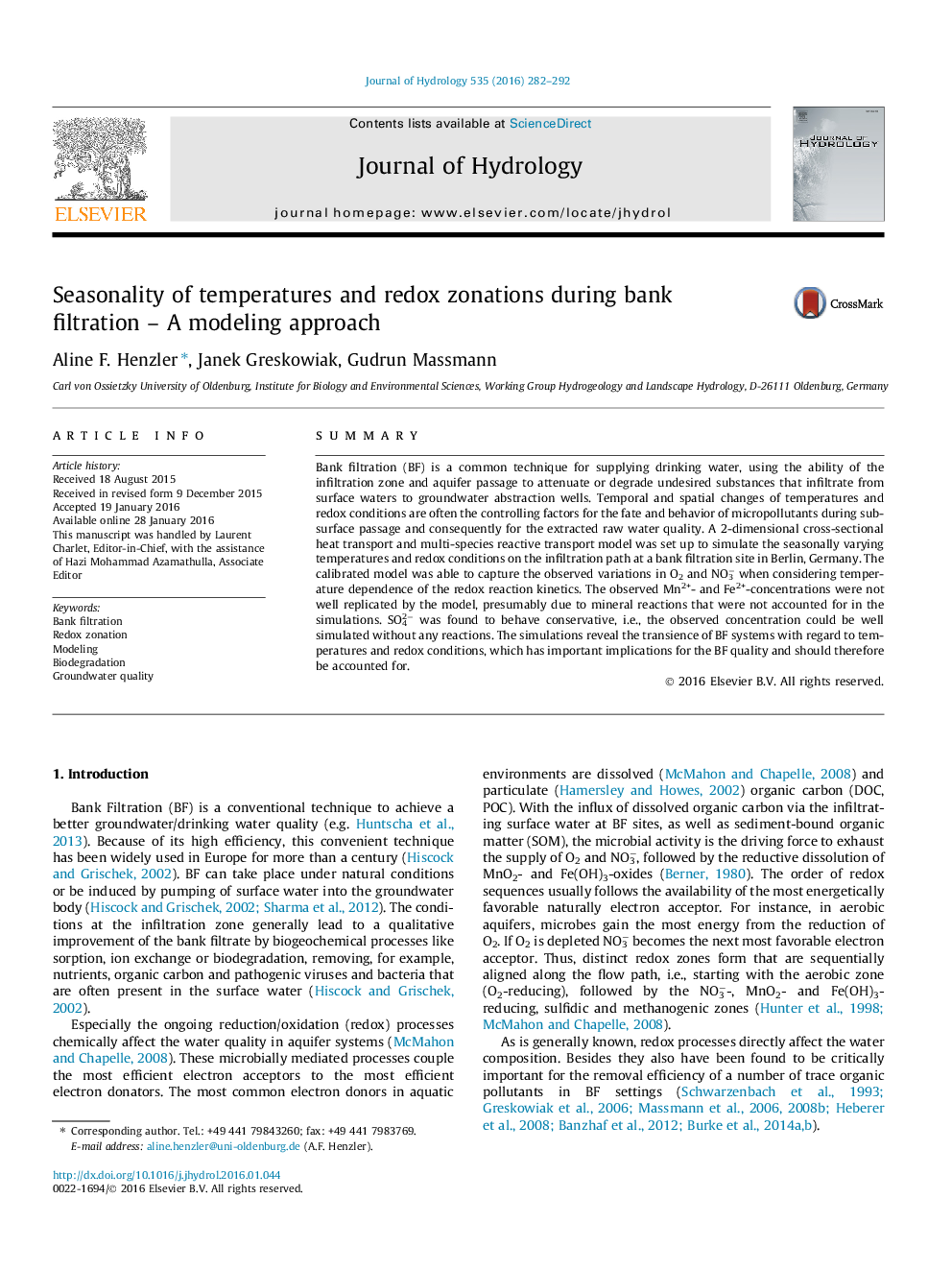| Article ID | Journal | Published Year | Pages | File Type |
|---|---|---|---|---|
| 6410113 | Journal of Hydrology | 2016 | 11 Pages |
â¢Numerical modeling was used to illustrate the transience of temperatures during bank filtration.â¢Redox processes were simulated according to temperature changes.â¢Highlighting the importance of the incorporation of seasonal effects.
SummaryBank filtration (BF) is a common technique for supplying drinking water, using the ability of the infiltration zone and aquifer passage to attenuate or degrade undesired substances that infiltrate from surface waters to groundwater abstraction wells. Temporal and spatial changes of temperatures and redox conditions are often the controlling factors for the fate and behavior of micropollutants during subsurface passage and consequently for the extracted raw water quality. A 2-dimensional cross-sectional heat transport and multi-species reactive transport model was set up to simulate the seasonally varying temperatures and redox conditions on the infiltration path at a bank filtration site in Berlin, Germany. The calibrated model was able to capture the observed variations in O2 and NO3â when considering temperature dependence of the redox reaction kinetics. The observed Mn2+- and Fe2+-concentrations were not well replicated by the model, presumably due to mineral reactions that were not accounted for in the simulations. SO42â was found to behave conservative, i.e., the observed concentration could be well simulated without any reactions. The simulations reveal the transience of BF systems with regard to temperatures and redox conditions, which has important implications for the BF quality and should therefore be accounted for.
